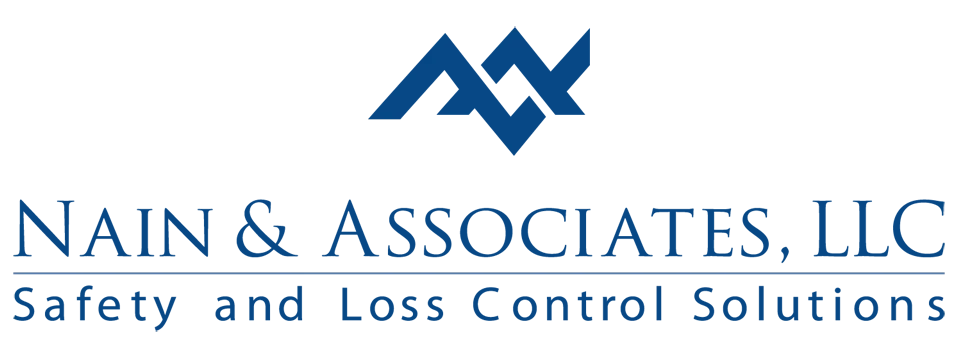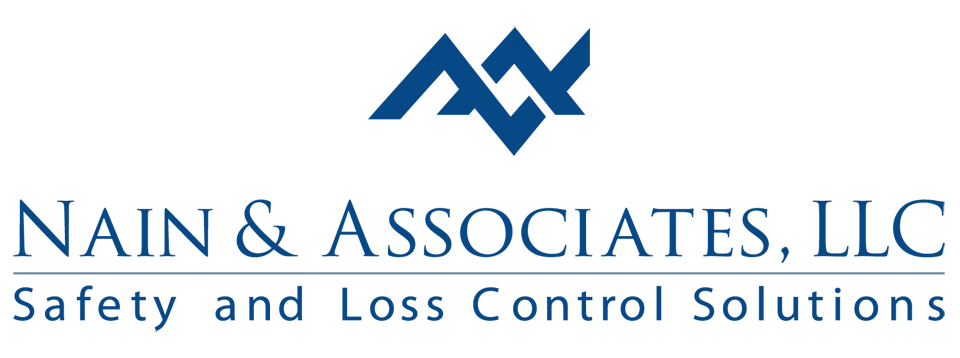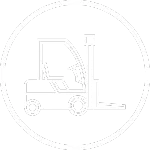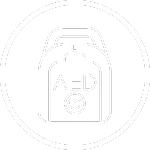Now Offering Spanish Safety Training!

Now Offering Spanish Safety Training!
Specialized Safety
Industrial Hygiene Sampling
FSDAVCFEBFEVSDDVFSD
FSDAVCFEBFEVSDDVFSD
FSDAVCFEBFEVSDDVFSD
Specialized Safety - Industrial Hygiene Sampling
Detecting Workplace Hazards with Expert Hygiene Sampling

Industrial Hygiene Sampling is crucial for identifying environmental hazards that could harm your workforce. At Nain & Associates, we conduct thorough assessments of air quality, chemical exposures, and noise levels within your facility. Our experts use advanced equipment to detect contaminants like dust, fumes, gases, and vapors that may not be visible but pose significant health risks.
By identifying these hazards early, you can implement appropriate controls to protect your employees and ensure compliance with OSHA regulations. We provide detailed reports with actionable recommendations, helping you reduce the risk of occupational illnesses and improve overall workplace safety. Trust our specialized expertise to maintain a healthy environment for your team.

Testing Methods to Reduce Hazards and Exposure
Our industrial hygiene professionals utilize state-of-the-art equipment and methodologies to assess various environmental factors in your workplace. We conduct air sampling to measure concentrations of airborne contaminants, such as solvents, particulates, and biological agents. Noise monitoring is performed to evaluate sound levels that may contribute to hearing loss over time. We also assess indoor air quality parameters like temperature, humidity, and ventilation effectiveness.
Additionally, we assess chemical exposures by sampling surfaces and materials to detect potential skin irritants or toxins. Heat stress evaluations help identify risks associated with high-temperature environments, preventing heat-related illnesses. Our team can perform radiation monitoring if your facility uses or produces radioactive materials. We also conduct ergonomic assessments to reduce musculoskeletal disorders caused by repetitive motions or improper workstation setups.
By employing these detailed testing methods, we provide you with a comprehensive understanding of the occupational hazards present in your facility. Our findings enable you to implement targeted control measures, such as ventilation improvements, protective equipment, or administrative changes. This proactive approach not only ensures regulatory compliance but also enhances employee well-being and productivity. Furthermore, regular monitoring helps track the effectiveness of implemented controls and identifies new risks as operations evolve.
Maintaining OSHA Standards for a Safe and Healthy Workforce

Compliance with OSHA regulations is essential to avoid penalties and ensure a safe working environment. Our Industrial Hygiene Sampling services help you meet these standards by identifying hazards and recommending corrective actions tailored to your operations. We stay current with regulatory changes to provide accurate guidance, including understanding permissible exposure limits set by OSHA. This ensures you meet legal obligations and foster a culture of safety within your organization.
By partnering with Nain & Associates, you demonstrate your commitment to employee health and safety. Our assessments and reports serve as documentation of your compliance efforts, invaluable during regulatory inspections. Additionally, maintaining compliance enhances your company's reputation and reduces costs associated with workplace injuries. A strong safety record can be a competitive advantage, attracting clients and employees who value health and safety commitments.

Our Industrial Hygiene Sampling not only assists with compliance but also plays a crucial role in safeguarding employee health. Exposure to environmental hazards can lead to acute or chronic health issues, affecting productivity and quality of life. Common issues include respiratory problems, hearing loss, and skin conditions. By identifying and mitigating these risks, you reduce absenteeism, lower healthcare costs, and create a more engaged workforce. Demonstrating that you value employee well-being boosts job satisfaction and loyalty, leading to better teamwork and innovation.
Investing in employee health has long-term benefits for your organization. Healthy employees are more productive and contribute positively to company culture. A strong focus on health and safety improves retention and attracts top talent. Nain & Associates provides expertise to develop effective strategies for maintaining a safe workplace. Our customized approach ensures your needs are met with practical solutions. Fewer disruptions due to accidents enhance client trust, giving you a competitive edge.
Frequently Asked Questions
Frequently Asked Questions
What is industrial hygiene sampling and why is it important for workplace safety?
Industrial hygiene sampling involves collecting and analyzing samples from the workplace to identify potential health hazards like airborne contaminants, chemical substances, and biological agents. This critical safety service is essential for assessing exposure levels to harmful agents and implementing corrective actions to mitigate risks. It helps businesses comply with OSHA standards, prevent occupational diseases, enhance employee well-being, and maintain productivity, demonstrating a commitment to health and safety.
How can industrial hygiene sampling help comply with OSHA standards?
By identifying and evaluating potential health hazards in the workplace, industrial hygiene sampling provides the necessary data to implement effective control measures. This ensures that businesses meet OSHA standards for workplace safety and health, preventing regulatory violations and enhancing the safety culture within the organization.
What types of hazards can industrial hygiene sampling detect?
Industrial hygiene sampling can detect a wide range of health hazards, including airborne contaminants (such as dust, vapors, and gasses), chemical substances (like solvents and acids), and biological agents (such as molds and bacteria). Identifying these hazards is crucial for implementing strategies to reduce exposure and protect employee health.
What are the steps involved in conducting industrial hygiene sampling?
The process includes identifying potential hazards, selecting appropriate sampling methods, collecting samples using specialized equipment, analyzing the collected samples in a laboratory, and interpreting the results to assess exposure levels. Based on the findings, recommendations for improving workplace safety and reducing hazardous exposures are made.
How often should a business conduct industrial hygiene sampling?
The frequency of industrial hygiene sampling depends on several factors, including the nature of the business operations, the types of hazards present, changes in processes or materials, and regulatory requirements. Regular sampling is recommended to ensure ongoing compliance and safety, especially when new hazards are introduced or when changes in operations occur.
We Combine Sampling Methods for a Custom Approach
Every industry faces unique environmental hazards. Our Industrial Hygiene Sampling services are tailored to your sector's specific challenges. Whether you operate in manufacturing, construction, healthcare, or any other field, we understand the particular risks involved and adapt our assessments accordingly. With experience across multiple sectors, our experts apply specialized knowledge to your situation.
Through close collaboration, we identify areas of concern and prioritize sampling efforts, understanding the nuances of your industry to uncover hazards that might be overlooked. This ensures all potential risks are assessed and appropriate, effective control measures are implemented.
Staying informed about the latest developments and regulations affecting your industry, we provide guidance that is both compliant and aligned with best practices. With Nain & Associates, you receive personalized support addressing your unique needs.


Choosing Nain & Associates for your Industrial Hygiene Sampling means partnering with professionals dedicated to your industry's safety standards. From initial assessments to follow-up evaluations, we work alongside you to address any emerging issues. Our team is available to answer questions, provide training, and assist with the implementation of recommended controls. By choosing us, you gain a trusted advisor in workplace safety. Our goal is to build a lasting relationship that contributes to your organization's success.
The Long-Term Impact of Industrial Hygiene Sampling
Investing in Industrial Hygiene Sampling can have a significant positive impact for your organization. By proactively identifying and mitigating environmental hazards, you reduce the likelihood of workplace illnesses and injuries. This not only protects your employees but also minimizes costs related to workers' compensation claims, medical expenses, and potential litigation. Moreover, early detection of hazards allows for timely interventions that can prevent minor issues from escalating into major problems. This proactive management fosters a safer work environment where employees feel valued and protected.
Furthermore, a strong safety record enhances your company's reputation among clients, partners, and regulators. It demonstrates a commitment to responsible operations and can differentiate you from competitors. Customers and stakeholders are increasingly valuing companies that prioritize health and safety, which can lead to new business opportunities and partnerships. A positive safety culture also contributes to higher employee morale and engagement. Workers are more likely to be productive and committed when they know their employer cares about their well-being. This can reduce turnover rates and associated recruitment costs.
Regular Industrial Hygiene Sampling also supports continuous improvement within your organization. By consistently monitoring environmental conditions, you can identify trends, evaluate the effectiveness of control measures, and make informed decisions about process changes or investments. This data-driven approach leads to more efficient operations, better resource allocation, and enhanced overall performance. Additionally, compliance with environmental and occupational health regulations avoids fines and sanctions that can have financial and reputational impacts. Staying ahead of regulatory requirements positions your company as a leader in industry standards.
Have Questions About Our Services?
Contact us to learn more today!
Have Questions About Our Services?
Contact us to learn more today!
Design By: Customers.Plus
© 2026 | Nain & Associates LLC





